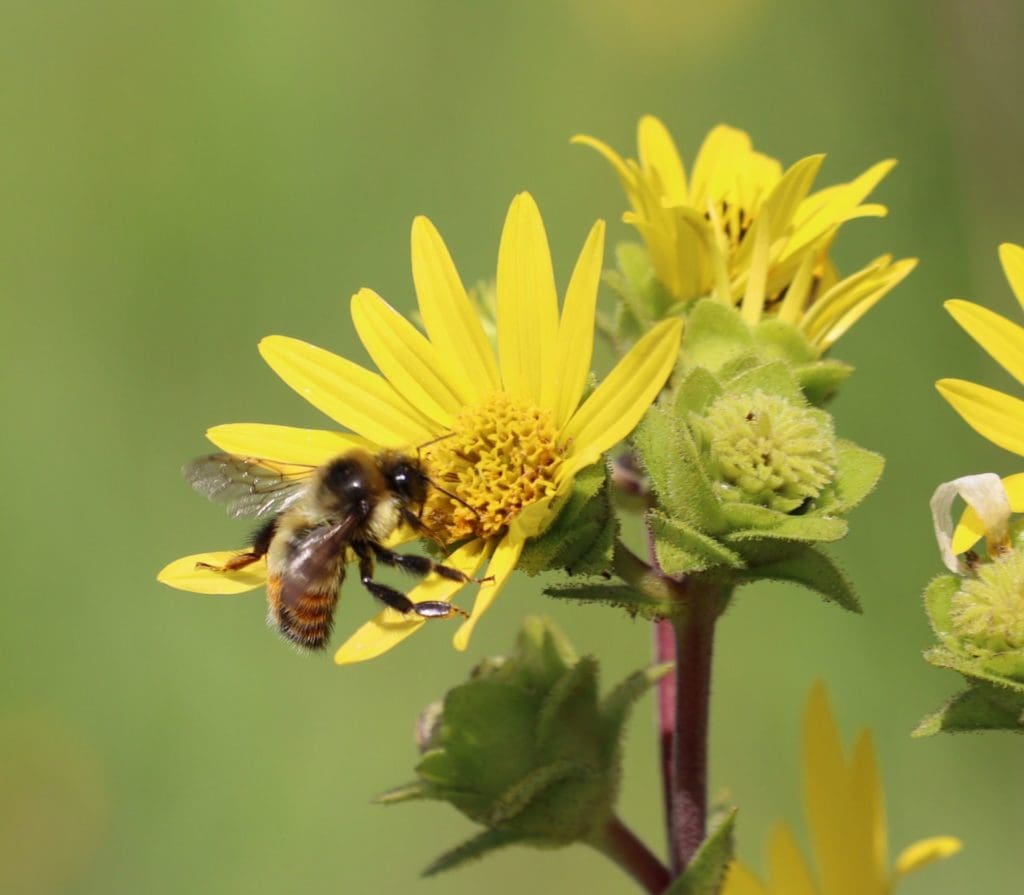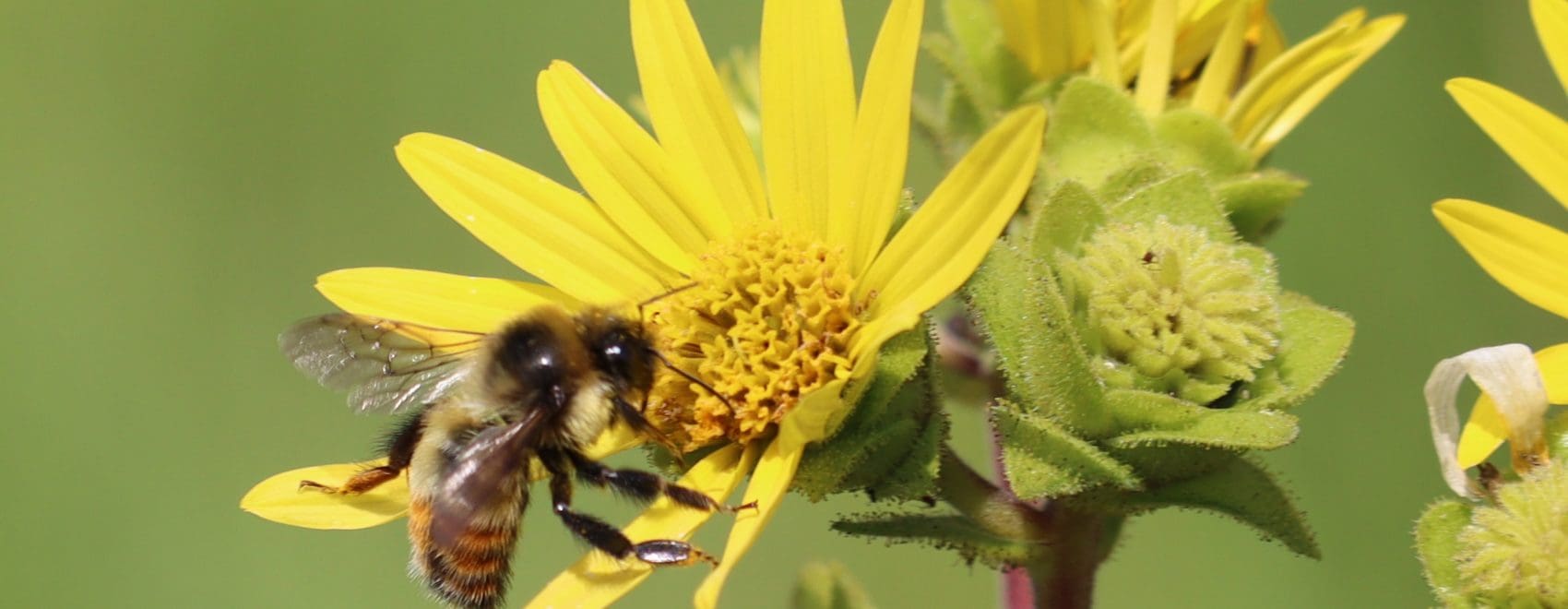By Summer Intern, Natalie McNeely

This summer, one of my favorite experiences at Woodland Dunes has been conducting bee surveys. As someone who has always loved observing wildlife, it’s been exciting to continue that work here. This year, we’ve documented six species of bumble bees on the preserve, and we’re still surveying!
My interest in pollinators started during college. In the summer of 2023, I worked in a prairie pollinator lab at Ripon College, where I studied the floral preferences of pollinators in central Wisconsin. I spent many days surveying in prairies and documenting the flowers that bumble bees and other pollinators, such as butterflies, beetles, and wasps, were seen visiting. During this research, I would sort through thousands of photos of bumble bees and flowers, and this allowed me to grow my appreciation for prairies and their pollinators as well as learn how to identify different species. I have been so happy to bring my experience and passion into my work at the Dunes. Identifying bumble bees can be very tricky as they move quickly, but I love sharing my identification knowledge and awe at just how fascinating insects can be.
Bumble bees, for example, are social animals that live in colonies. Unlike honey bees, only the queen bumble bee survives the winter, hibernating underground until spring, kind of like a tiny fuzzy, flying bear. I’ve always thought that was a fun way to picture her.
One of the most interesting things I’ve learned is that bumble bees use a technique called buzz pollination. By vibrating their flight muscles, they’re able to shake pollen loose from flowers that don’t give it up easily. This method is essential for certain crops we rely on, including cranberries, which are an important part of Wisconsin agriculture.
And did you know that Wisconsin is home to more than 400 native pollinator species? That includes 21 different kinds of bumble bees. Each one plays a unique role in supporting local ecosystems. Bumble bees even leave behind an oily scent on flowers they’ve already visited. This helps signal to other bees that the nectar has already been collected, a clever way to avoid wasting energy.
Learning these facts while doing fieldwork has made every encounter with buzzing bees more meaningful. Now, when I stop to watch a bumble bee on a flower, I’m not just seeing an insect, I’m seeing a pollinator. Pollinators are not only important to flowering plants within our ecosystems, but also humans, as one out of every three bites of food we eat exists because of animal pollinators like bees, butterflies, beetles, birds, and bats.
At Woodland Dunes, exploring nature through surveys like these has reminded me how much there is to discover when we take time to look closely. I love that I get to share that curiosity with others, whether it’s through programs, trail walks, or quiet moments with a camera, waiting for the next bee to land. Before summer ends, take the time to try to spot a few pollinators of your own, whether that’s in the butterfly garden, off Willow Trail, or in your backyard at home!

